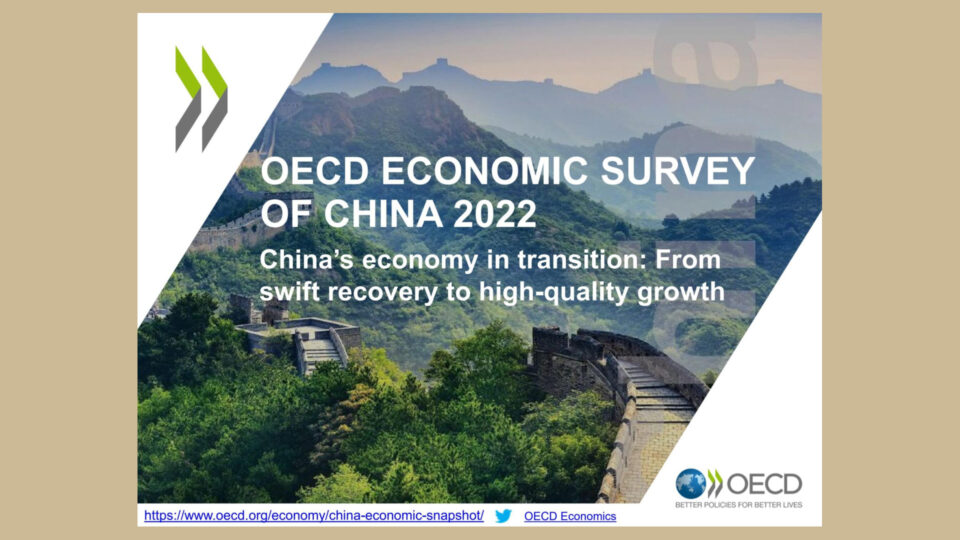OECD Economic Survey: China
09.18.23
China’s economy has strongly rebounded from the deep dive following the COVID-19 outbreak and has returned to its gradually slowing path. The rebalancing from investment to consumption, from manufacturing to services, and from rural to urban migration have all been set back by the pandemic, but need to restart to make growth sustainable and inclusive.

China’s economy has strongly rebounded from the deep dive following the COVID-19 outbreak and has returned to its gradually slowing path. The rebalancing from investment to consumption, from manufacturing to services, and from rural to urban migration have all been set back by the pandemic, but need to restart to make growth sustainable and inclusive. The investment-driven recovery kept investment efficiency low, indicating continued capital misallocation. Corporate debt climbed to pre-pandemic highs: borrowing has been fuelled by crisis-related and more long-standing factors, including implicit guarantees for state-owned enterprises and other public entities. Slowing growth and continuing tax cuts will imply lower fiscal resources to make growth more inclusive, thus stable revenue sources from personal income taxes and dividends from state-owned enterprises are needed. Although the population is aging rapidly, China can still reap the “reform dividend” with measures to keep up the sustained growth of productivity. Reforms that enhance competition in product markets are among those that can potentially bring about significant productivity gains.
The Economic Survey of China assesses recent macroeconomic performance and proposes policy measures to promote higher-quality growth such as product market reforms.

